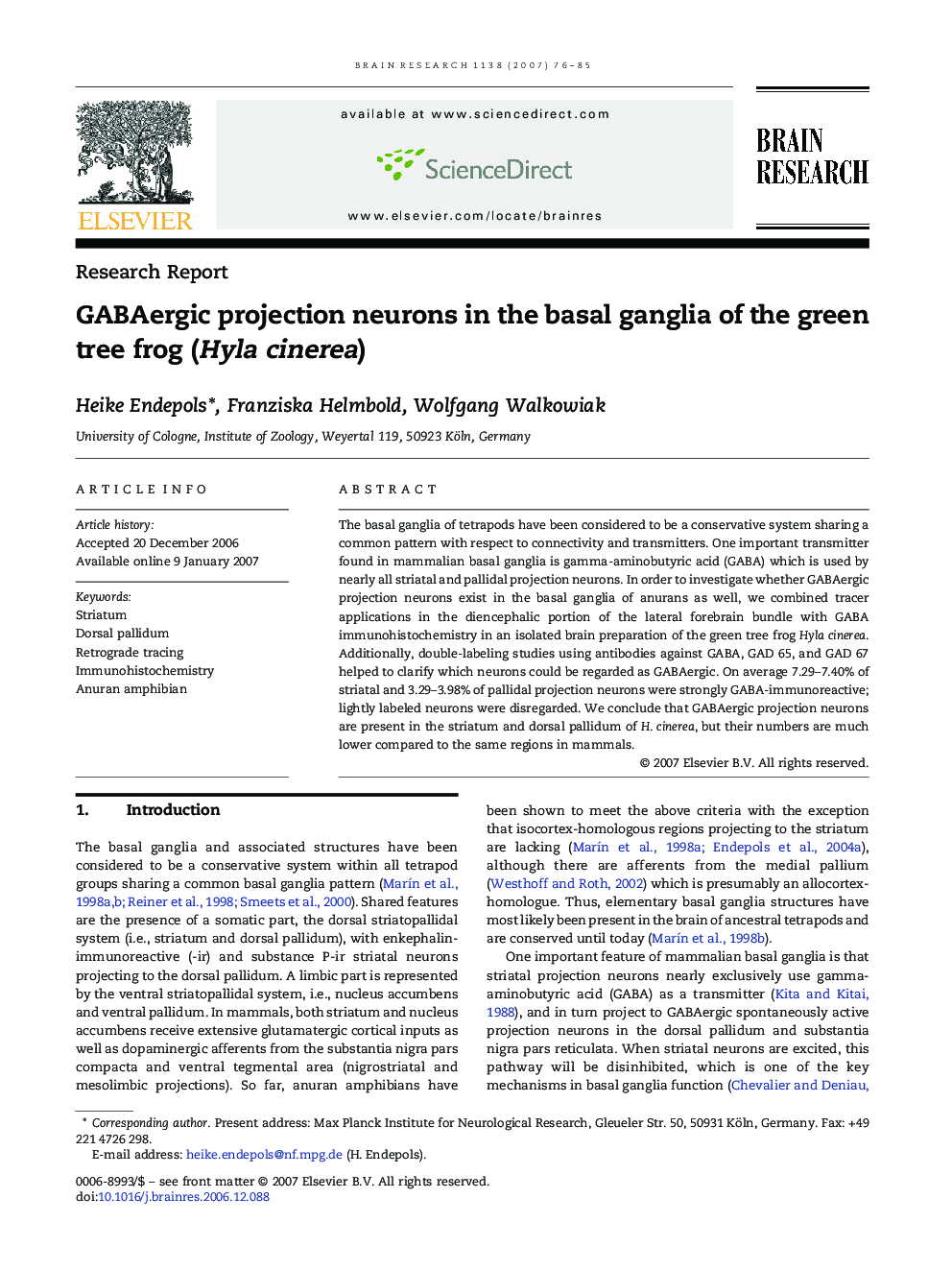| Article ID | Journal | Published Year | Pages | File Type |
|---|---|---|---|---|
| 4331444 | Brain Research | 2007 | 10 Pages |
The basal ganglia of tetrapods have been considered to be a conservative system sharing a common pattern with respect to connectivity and transmitters. One important transmitter found in mammalian basal ganglia is gamma-aminobutyric acid (GABA) which is used by nearly all striatal and pallidal projection neurons. In order to investigate whether GABAergic projection neurons exist in the basal ganglia of anurans as well, we combined tracer applications in the diencephalic portion of the lateral forebrain bundle with GABA immunohistochemistry in an isolated brain preparation of the green tree frog Hyla cinerea. Additionally, double-labeling studies using antibodies against GABA, GAD 65, and GAD 67 helped to clarify which neurons could be regarded as GABAergic. On average 7.29–7.40% of striatal and 3.29–3.98% of pallidal projection neurons were strongly GABA-immunoreactive; lightly labeled neurons were disregarded. We conclude that GABAergic projection neurons are present in the striatum and dorsal pallidum of H. cinerea, but their numbers are much lower compared to the same regions in mammals.
